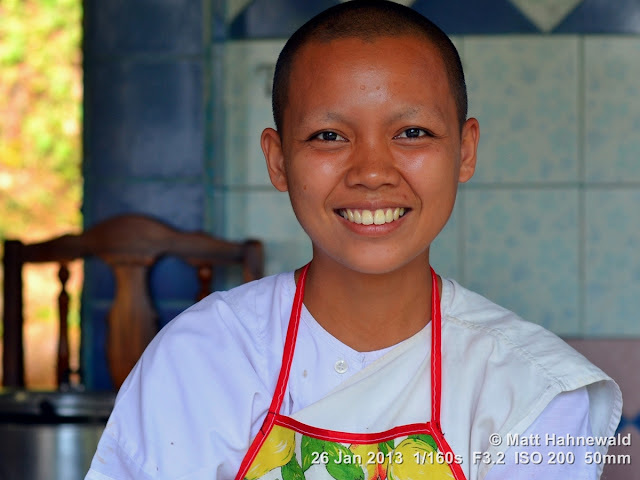Like in most other Theravada
nations, Buddhism in Thailand is represented primarily by the presence of Buddhist monks, who
serve as officiants on ceremonial occasions, as well as being responsible for
preserving and conveying the teachings of the Buddha.
Many monks in
Thailand begin their careers by serving as temple boys.
They are traditionally no younger than eight and do minor housework. The
primary reason for becoming a temple boy is to gain a basic education, particularly in basic reading and
writing and the memorisation of the scriptures chanted on ritual occasions.
Prior to the creation of state-run primary schools in Thailand, village temples
aka wats served as the primary form of education for most Thai boys. Service in a temple
as a temple boy was a necessary prerequisite for attaining any higher
education, and was the only learning available to most Thai peasants.
Temporary ordination is the norm among Thai Buddhists. Most
young men traditionally ordain for the term of a single rainy season aka vassa. Those who
remain monks beyond their first vassa typically remain monks for between
one and three years, officiating at religious ceremonies in surrounding villages
and possibly receiving further education in reading and writing. After this
period of one to three years, most young monks return to lay life, going on to
marry and begin a family. Young men in Thailand who have undergone ordination
are seen as being more suitable partners for marriage; unordained men are
euphemistically called "unripe", while those who have been ordained
are said to be "ripe". A period as a monk is a prerequisite for many
positions of leadership within the village hierarchy.
The Thai tradition supports laymen to go into a monastery,
dress and act as monks, and study while there. The time line is based on
threes, staying as a monk for three days, or three weeks, or three months or
three years, or example of three weeks and three days. This retreat is expected
of all male Thai, rich or poor, and often is scheduled after high school. Such
retreat brings honor to the family and blessings aka merit to the
young man.
Monks who do not return to lay life typically specialise in
either scholarship or meditation. Those who specialise in scholarship typically
travel to regional education centers to begin further instruction in the Pāli language and the scriptures,
and may then continue on to the major monastic universities located in Bangkok. The
route of scholarship is also taken by monks who desire to rise in the
ecclesiastic hierarchy, as promotions within the government-run system is
contingent on passing examinations in Pāli and Dhamma studies.
Unlike in Burma and
Sri Lanka, the bhikkhuni lineage of women monastics was never
established in Thailand. Women primarily participate in religious life either
as lay participants in collective merit-making rituals or by doing domestic
work around temples. A small number of women choose to become maechi,
non-ordained religious specialists who permanently observe either the Eight Precepts or the Ten Precepts. Maechi do not receive the level
of support given to bhikkhu
and their position in the Thai society is the subject of current discussion.
High-res portrait photographs with full exif data, precise geotags and technical details in Matt Hahnewald's












No comments:
Post a Comment